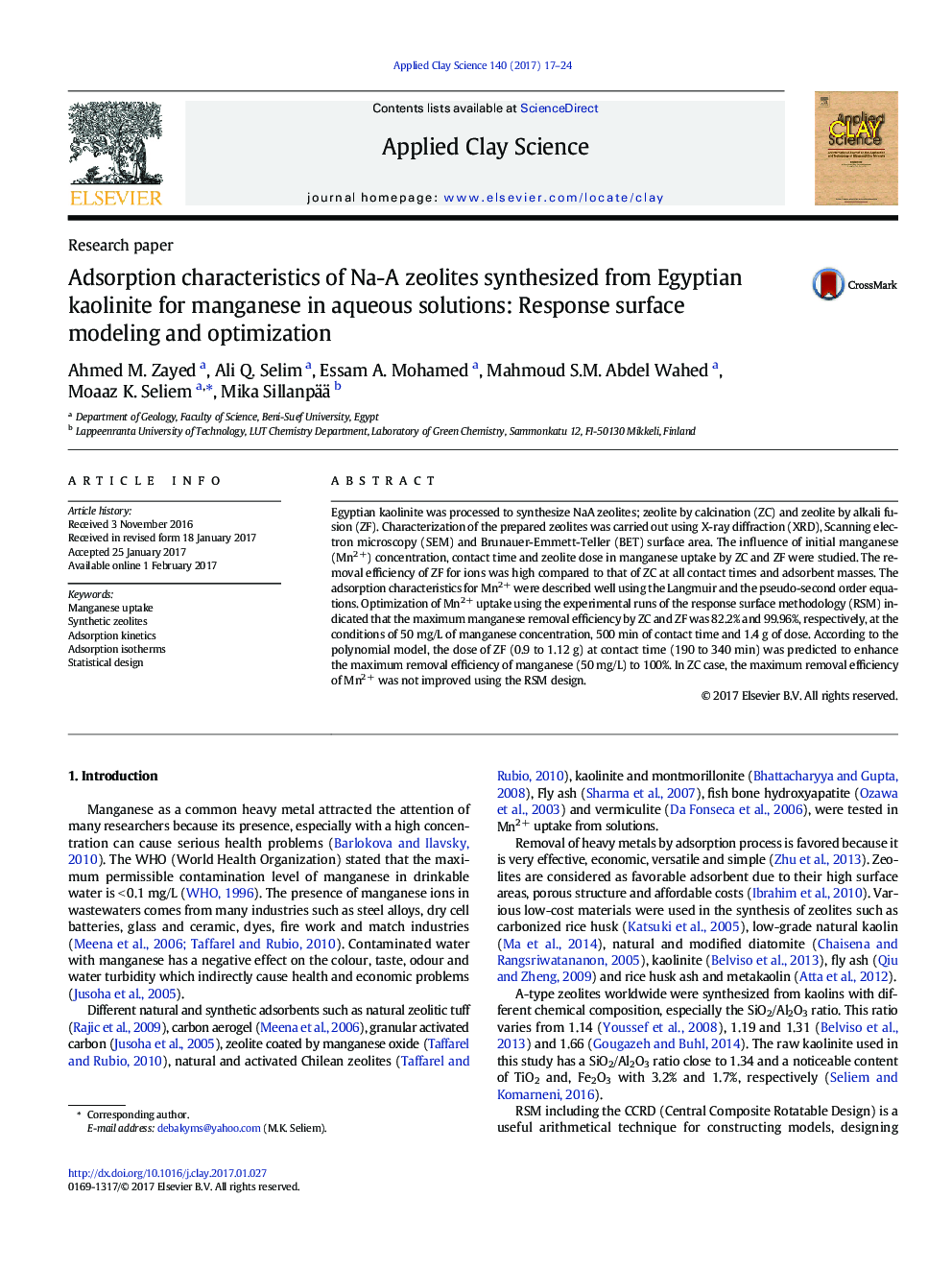| Article ID | Journal | Published Year | Pages | File Type |
|---|---|---|---|---|
| 5468542 | Applied Clay Science | 2017 | 8 Pages |
Abstract
Egyptian kaolinite was processed to synthesize NaA zeolites; zeolite by calcination (ZC) and zeolite by alkali fusion (ZF). Characterization of the prepared zeolites was carried out using X-ray diffraction (XRD), Scanning electron microscopy (SEM) and Brunauer-Emmett-Teller (BET) surface area. The influence of initial manganese (Mn2Â +) concentration, contact time and zeolite dose in manganese uptake by ZC and ZF were studied. The removal efficiency of ZF for ions was high compared to that of ZC at all contact times and adsorbent masses. The adsorption characteristics for Mn2Â + were described well using the Langmuir and the pseudo-second order equations. Optimization of Mn2Â + uptake using the experimental runs of the response surface methodology (RSM) indicated that the maximum manganese removal efficiency by ZC and ZF was 82.2% and 99.96%, respectively, at the conditions of 50Â mg/L of manganese concentration, 500Â min of contact time and 1.4Â g of dose. According to the polynomial model, the dose of ZF (0.9 to 1.12Â g) at contact time (190 to 340Â min) was predicted to enhance the maximum removal efficiency of manganese (50Â mg/L) to 100%. In ZC case, the maximum removal efficiency of Mn2Â + was not improved using the RSM design.
Related Topics
Physical Sciences and Engineering
Earth and Planetary Sciences
Geochemistry and Petrology
Authors
Ahmed M. Zayed, Ali Q. Selim, Essam A. Mohamed, Mahmoud S.M. Abdel Wahed, Moaaz K. Seliem, Mika SillanpÓÓ,
